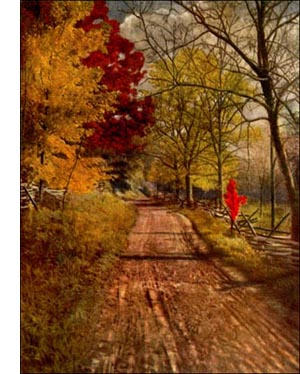Viburnums and Elders
 FAMILY CAPRIFOLIACEAE
FAMILY CAPRIFOLIACEAEGenus VIBURNUM, A. L. de Juss.
Small trees with ill-smelling wood, and tough, slender branches. Leaves simple, opposite, ovate, 2 to 4 inches long, with margined petioles. Flowers white, in broad terminal cymes. Fruit a blue, berry-like drupe with flat stone.
Viburnums are related to the elders and belong in the honeysuckle family. They include a multitude of ornamental shrubs, evergreen and deciduous, grown in gardens and shrubberies the world over for their showy flowers and decorative fruits as well as their handsome foliage which often colours brilliantly in the fall. Not all viburnums combine all these desirable horticultural qualities.
There are about one hundred species known. They are distributed in the continents of the Northern Hemisphere and extend south to Central America, North Africa and Java.
The old-fashioned snowball bush is perhaps the most familiar representative of the genus. The Japanese snowball, with much more handsome foliage and flowers, followed by red berries, is rapidly succeeding the other in popularity.
Genus SAMBUCUS, Linn.
Quick-growing, stout-branched trees and shrubs, with pithy branchlets and ill-smelling sap. Wood dense. light brown, soft. Leaves pinnate, of 5 leaflets, opposite, deciduous. Flowers small, perfect, white, in broad compound cymes. Fruits small, blue or black, juicy, berry-like, each with 3 to 5 nutlets.
Our two arborescent species of the genus Sambucus are found west of the Mississippi, but the family traits are familiar to Eastern people through their acquaintance with the two shrubby species, the red-berried and the black-berried elders.
There are twenty species, all told, in the genus. The golden elder is a yellow-leaved form of the European species, Sambucus nigra, Linn. Two other species have produced golden varieties. These are altogether too much planted, and the handsome shrubby native species, above mentioned, have not been fully appreciated.
The fruit of the common elder is used in making elderberry wine, and elderberry pie is a staple viand in many country districts in the season of the ripening fruit. In fact, the idea of the improvement of this species as a small fruit has taken hold upon some plant breeders. The Brainerd elderberry with fruit as big as cherries was introduced into the trade in 1890.
Elder shoots are used in toy making and for "spiles" to draw sap from maple trees. The name of the genus is from the Greek, Sambuke, a musical wind instrument made of the hollow stems of the elder.
Mexican Elder Tree
Pale Elder Tree
Rusty Nannyberry Tree
Sheepberry Tree